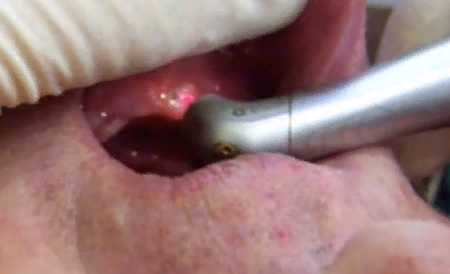Although laser dental implants have been used for quite some time, many people do not understand the process and often draw erroneous conclusions based on rumors.
In the modern world, people constantly have to deal not only with health problems, but also with the problem of choosing whom to entrust the solution of health problems… In order to decide “whom”, people are forced to obtain a lot of information about the various methods used today in medicine, the services provided, after which they have to weigh the “pros and cons”.
Accordingly, it is not uncommon to give information about services the most attractive “appearance”. On the one hand, this is understandable, but on the other hand – various statements are more of a “publicity stunt”, due to which the consumer already “operates” in his choice rather with myths than reality.
So it happens with many “novelties” in the market of dental services. Moreover, even if the method has a certain basis for applicability, advertising statements about it can create a completely mythical impression. In this article we will consider one of the “innovations”: laser dental implantation.
First of all, it is necessary to pay attention to the incorrect “name” of the whole method:
- The combination “dental implantation” is very common today. Most likely, this is just a simplified name for the operation that has taken root (in accordance with the “it’s clear what we’re talking about” principle). But strictly speaking, the surgeon is not implanting “teeth”, but an artificial support for prostheses. That is, in the analogy of teeth, it is their root part.
- “Laser implantation” does not exist. Implantation (in dentistry) is the insertion of an implant into the jaw bone tissue. The laser is not “involved” in this manipulation. Why then does the word “laser” appear in the name of the method? The surgeon/implantologist needs to gain access to the bone to perform the surgery, for which the gum is incised. At this point, the laser can replace the scalpel. The entire “method” of “laser implantation” actually boils down to using a laser to cut the gum.
The laser can actually be used to make an incision in the mucosa. Let’s take a look at the advertising claims and related myths regarding “laser implantation”.
- “Slight likelihood of implant rejection.” The degree of likelihood of implant “rejection” depends on many factors, most notably the quality of the surgery itself and the quality of the implants. Recall: at the stage when the doctor is working with the bone and the implant, the laser is not involved and therefore has no effect on the “probability of implant rejection”.
- “Maximum precision of exposure and absolute sterility”. Achieving these “parameters” depends only on the skill of the surgeon and the sterility requirements of the clinic’s medical staff; it does not depend on the laser.
- “The duration of implantation is from fifteen minutes to half an hour. Implantation is a complicated procedure, and specifying its duration in minutes/hours is not always correct. For example, if the doctor first has to perform a bone block implantation (or sinus elevator), this can be considered a certain stage of implantation, but the implantation itself is not yet performed (at this stage, the doctor will not implant the artificial “root”). Consequently, it is difficult to calculate the total duration of measures taken as “minutes at an appointment”. Even if the clinical picture allows for a one-stage/single-stage implantation, the time required for its implementation is difficult to “tie in” to the laser, since the bulk of the work is not related to the gum incision, but to the manipulation of the bone and the structure. In other words, if a particular clinical situation requires an hour-long surgery, the doctor will work for an hour, regardless of whether the laser or scalpel is used to cut the gum.
- “Bloodless procedure.” A highly questionable “advantage.” The extent to which soft tissue will be damaged during surgery depends primarily on the skill of the surgeon, not the instrument. An incision made with a scalpel does result in blood in the wound; laser work is accompanied by the smell of burnt tissue. Is it more comfortable?
- “It requires less anesthesia.” It is not. The absence of pain during surgery is always achieved in the “traditional” way: through the administration of anesthetics.
- “Faster healing.” Another questionable statement. The success (and timing) of soft tissue healing (again) depends on the quality of the surgeon’s work, not on the properties of the laser.






